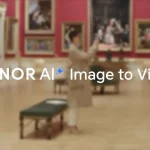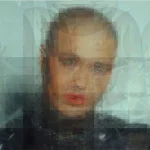A historic milestone in music and technology has arrived with “Recurse,” the world’s first commercially available song created using quantum-powered AI, launched by UK-based startup Moth in collaboration with British electronic artist ILĀ. Produced through Moth’s innovative Archaeo platform, this track blends quantum computing and artificial intelligence to support human creativity, offering a glimpse into the future of art. While “Recurse” has sparked excitement, it also highlights challenges in accessibility and the evolving role of technology in creative industries.
The creation of “Recurse” relies on Moth’s Archaeo platform, which uses Quantum Reservoir Computing (QRC) to analyze patterns in ILĀ’s music that traditional AI might miss. Unlike other AI music tools like Suno or Udio, Archaeo doesn’t fully generate songs on its own. Instead, it learns from small samples of an artist’s work and suggests elements like basslines, synths, or drum patterns, leaving the final arrangement to the artist. ILĀ shared with The Next Web that the process felt “refreshing,” emphasizing that the technology “works with you, not to replace you.” This human-centered approach mirrors other AI creative tools, such as Google’s language tools, which aim to enhance rather than overshadow user input.
Quantum computing plays a key role in this project, with Moth partnering with German startup IQM to access quantum hardware that speeds up the AI’s ability to process and suggest musical ideas. Brazilian composer Eduardo Reck Miranda, a leader in quantum music research, also contributed to the project, helping to bridge the gap between technology and art. The track’s official video, featuring a “quantum blur” effect, visually reflects its computational roots, creating a unique aesthetic that complements the music. This fusion of tech and creativity is similar to trends in AI communication tools, where innovation enhances user experiences, such as real-time translation.
Moth’s CEO, Dr. Ilana Wisby, called the release a “defining moment” in a statement to Interesting Engineering, noting that “Recurse” shows how quantum AI can “support and enhance” artists rather than replace them. The song is available on major streaming platforms, and Moth has also launched a 24/7 online stream called “RECURSE [infinite mix]” on infinite.mothquantum.com, offering a real-time, evolving version of the track. This focus on collaboration addresses concerns raised in AI privacy debates, where ethical AI use is a growing priority, especially as artists push back against unauthorized data use.
Despite its innovation, “Recurse” reveals challenges in making quantum AI accessible to all artists. Quantum computing requires significant resources, which limits its availability to most creators. The digital divide further complicates this, as smaller artists may lack the tools or expertise to use such advanced technology, a concern also seen in AI accessibility efforts. Additionally, the project sparks debate about the role of AI in art—while it enhances creativity for some, others question whether machine involvement dilutes the authenticity of human expression, a topic often discussed in cybersecurity discussions about balancing tech and ethics.
The release of “Recurse” could inspire a new wave of music production, where quantum AI becomes a tool for artists to explore uncharted creative territory. If Moth can make this technology more widely available, it might empower a broader range of creators, much like how AI hardware innovations are expanding access to augmented reality. For now, “Recurse” stands as a pioneering example of what’s possible when quantum computing and AI meet human artistry. What do you think about using quantum AI in music—does it open new doors for creativity or challenge the heart of art? Share your thoughts in the comments—we’d love to hear your take on this exciting development.







